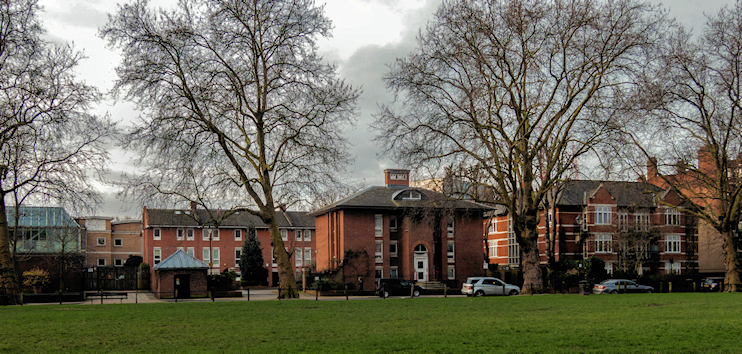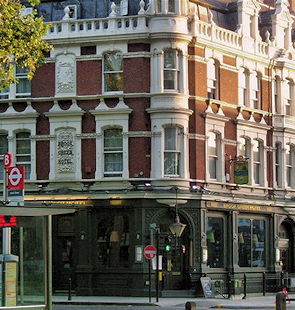Brook Green
Brook Green, Hammersmith & Fulham
Hammersmith’s sought-after north-eastern corner takes its name from a narrow, wedge-shaped green that was traversed by a brook running south from Shepherd’s Bush

Brook Green’s watercourse was called the Black Bull Ditch, after an inn that it passed. Almshouses were built on the south side of the green in 1629. With the aim of saving girls “from the deluge of vice,” Mrs Francis Carpue established a school in 1760 that later evolved to become St Mary’s Roman Catholic College.
Brook Green was formerly marshy and contaminated by waste that ran off nearby brickfields but orchards were planted following improvements in drainage. An annual fair was held from 1800 but it became too rowdy and was banned after 1823.
Holy Trinity Catholic church was built in 1851–3 on the south side of the green’s eastern end. The architect was William Wardell.
Cheap terraced houses were built to the east of the green and were principally occupied by Irish labourers. The Kensington Gazette called the area a ‘rookery’. Cholera broke out in 1859. The houses that filled the area over the rest of the century were of better quality and although their architecture is varied the overall effect is harmonious.
Meanwhile, Brook Green maintained its popularity with benevolent institutions; William and Catherine Booth began the work of the Salvation Army in a small house on the green, St Paul’s school relocated here and its trustees, the Mercers’ Company, later added a girls’ school.

The Hammersmith and West Kensington synagogue opened midway along the north side of the green in 1890. The building was enlarged in 1896 and is now the worship and ministry centre of the Chinese church in London.
Caterers J Lyons expanded their Cadby Hall factory to take over the buildings of St Mary’s College in 1925, paying enough to enable the college to buy magnificent premises at Strawberry Hill. St Paul’s School (for boys) moved to Castelnau in 1968 but the girls’ school has remained here.
The Lyons site was redeveloped in the early 1980s, with offices on Hammersmith Road and expensive houses and flats behind. The former Osram lamp factory has been converted into a Tesco supermarket, accompanied by Peabody housing. Several large companies have offices in or around Brook Green.
Shown in the photo above right,* Young’s Brook Green Hotel was extensively refurbished in 2015–16 and now has a cocktail bar in the basement and 17 ‘boutique bedrooms’ on the upper floors.
Residents of the ward of Avonmore and Brook Green are relatively likely to be young, unmarried, living alone and qualified to degree level or higher.
The most illustrious member of staff at St Paul’s Girls’ School has been Gustav Holst, who was director of music from 1905 until his death in 1934. Holst wrote the Brook Green Suite for the school’s junior orchestra. It is a suite for strings, consisting of a prelude, air, and dance.
Brook Green was home to the Victorian actor Sir Henry Irving.
